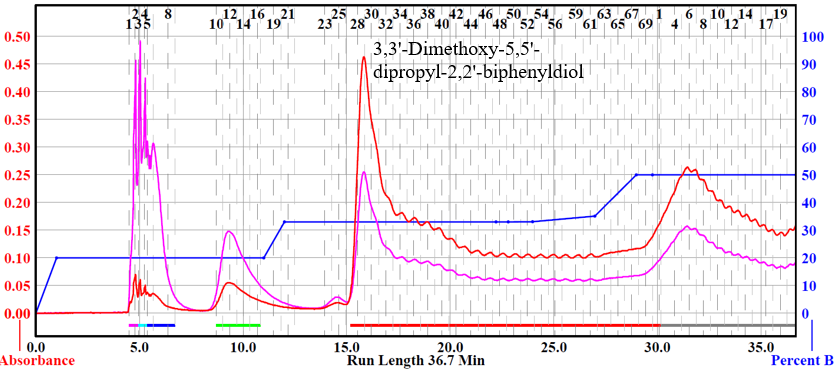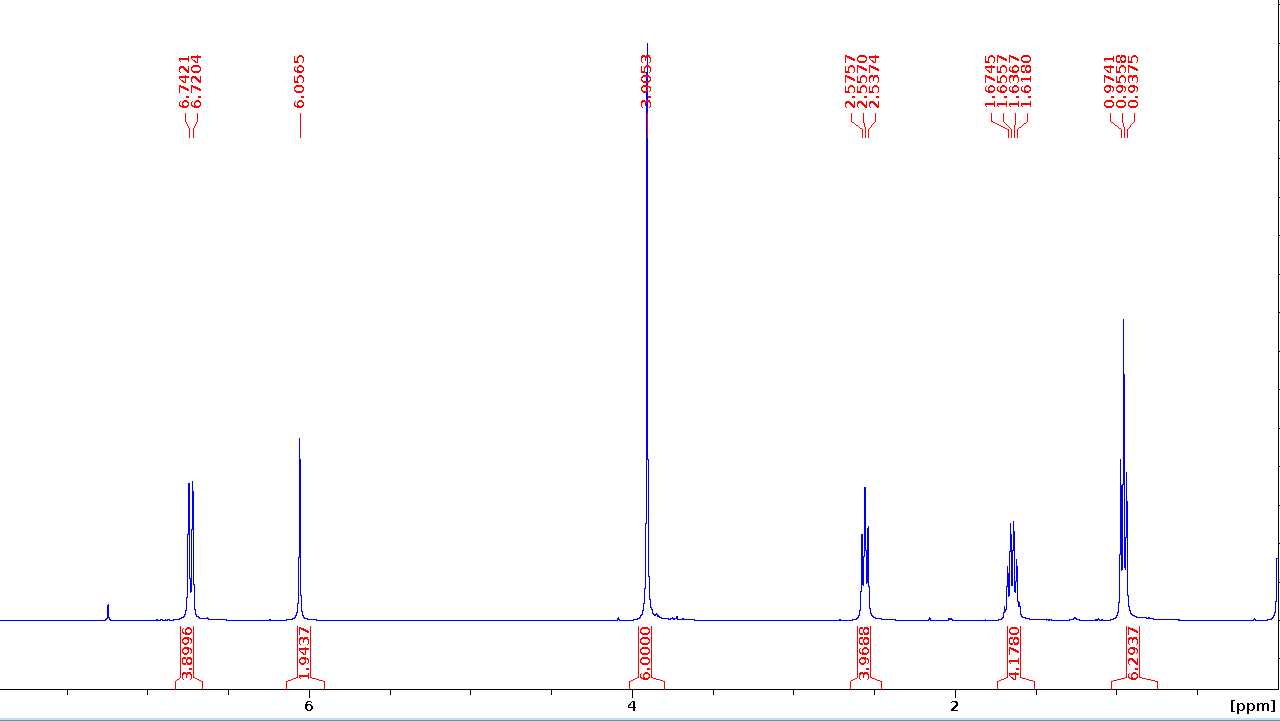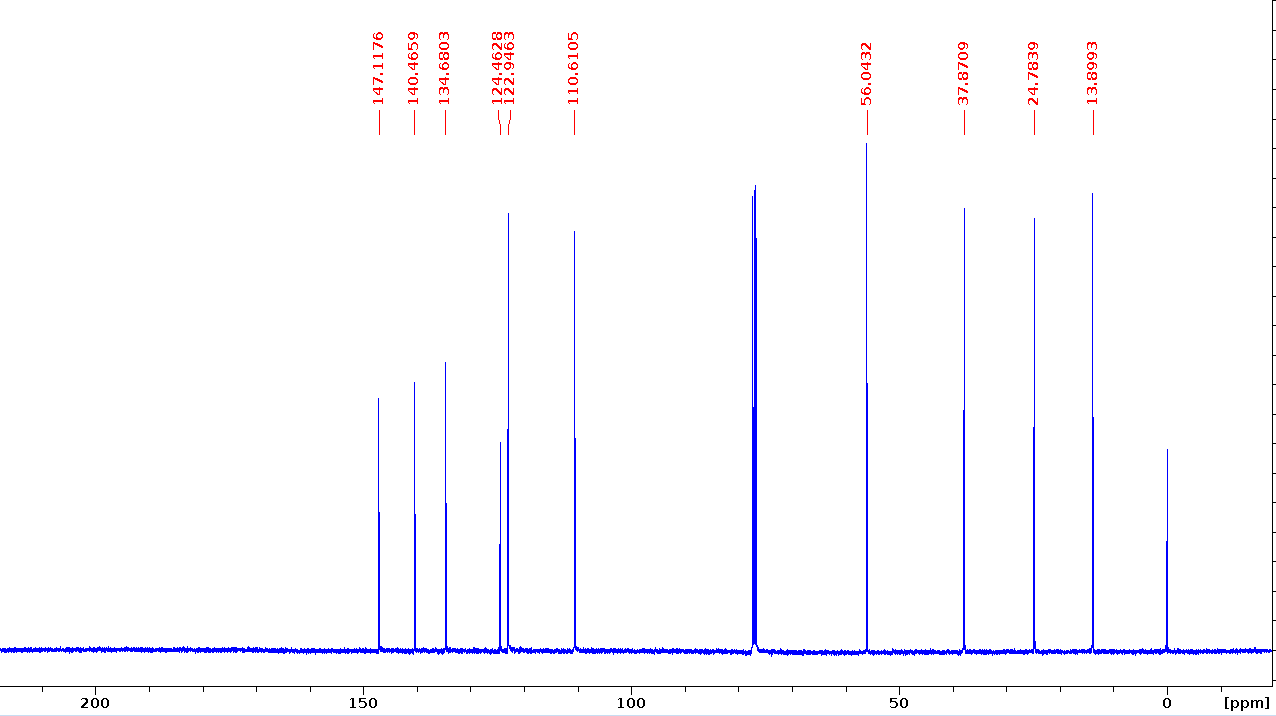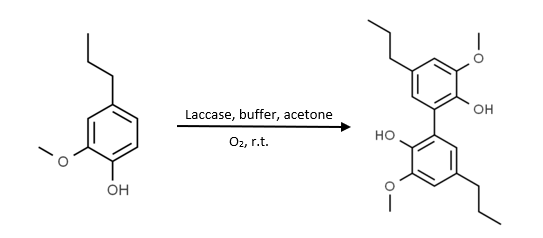Synthetic Procedure of 3,3'-dimethoxy-5,5'-dipropyl-2,2'-biphenyldiol
Lisa.Stanley, Gregg T. Beckham, rui.katahira
Disclaimer
This work was authored by the National Renewable Energy Laboratory, operated by Alliance for Sustainable Energy, LLC, for the U.S. Department of Energy (DOE) under Contract No. DE-AC36-08GO28308. Funding provided by U.S. Department of Energy Office of Energy Efficiency and Renewable Energy Bioenergy Technologies Office. The views expressed herein do not necessarily represent the views of the DOE or the U.S. Government.
Abstract
A direct understanding of the degradation reaction pathways of lignin polymers in biomass is difficult due to the complexity of lignin’s structure. To overcome the difficulty, simple lignin dimeric and trimeric model compounds which include typical lignin interunit linkages are useful to clarify reaction mechanisms. The following protocol describes the synthetic procedure of a 5-5' dimeric lignin model compound: 3,3'-Dimethoxy-5,5'-dipropyl-2,2'-biphenyldiol. Lignin model compounds are useful for screening the effectiveness of catalysts and microoganisms. As well as determining the effect of a treatment on the lignin fraction, in particular the effect on the degree of depolymerization in the lignin polymer.
Before start
All glassware is dried in an oven set to 105ºC then cooled in a desiccator prior to use.
Steps
Synthetic Procedure
4-propylguaiacol (5.00g , 0.03 mol) was dissolved in acetone (75mL ) then diluted with 500mL of acetic acid buffer (pH 5) [see Note 1]. Oxygen gas (O2) was bubbled through the buffer solution for 30 minutes. 75mg of laccase (>0.5 U/mg) was then added to the solution. The reaction was stirred at room temperature for four hours while the product precipitated.1 The precipitated material was then collected via vacuum filtration using a Büchner funnel. The crude product was purified via flash chromatography to yield 3,3'-dimethoxy-5,5'-dipropyl-2,2'-biphenyldiol (1.5452g, 31.3%).
[1]
Purification
Flash chromatography was performed using a Teledyne Isco Combiflash® NextGen 300+. Collected fractions were determined using a UV detector with wavelengths set at 254 and 280 nm. Samples were prepared by dissolving the crude material in the smallest amount of compatible solvent. Silica gel (mesh size 70-230) was then added to adsorb the material. Excess solvent was vacuum evaporated and the sample was loaded into a RediSep® Rf 25 g sample cartridge (catalog # 69-3873-240).
3,3'-Dimethoxy-5,5'-dipropyl-2,2'-biphenyldiol was purified via flash chromatography. Column used was a RediSep® Silver 80 g silica gel flash column (catalog # 69-2203-380). Solvent system was hexane (Solvent A) and ethyl acetate (Solvent B). 3,3'-Dimethoxy-5,5'-dipropyl-2,2'-biphenyldiol was separated from impurities using a ratio of 1:4 ethyl acetate:hexane for ten minutes then a ratio of 1:2 ethyl acetate: hexane.

NMR Spectroscopy
Nuclear magnetic resonance (NMR) spectra are acquired in a suitable deuterated NMR solvent at 25°C on a Bruker AVANCE 400 MHz spectrometer equipped with a 5 mm BBO probe. Chemical shifts (δ) are reported in ppm. 1H-NMR spectra are recorded with a relaxation delay of 1.0 s and an acquisition time of 4.09 s. The acquisition parameters for 13C-NMR include a 90˚ pulse width, a relaxation delay of 1.0 s, and an acquisition time of 1.36 s. Tetramethylsilane is used as a reference.

1H NMR (400 MHz, CDCl3) δ 6.74 (d, J=8.7 Hz, 4H, 2&6), 6.06 (s, 2H, OH), 3.91 (s, 6H, OMe), 2.58 (t, J=7.5 Hz, 4H, α), 1.67 (q, J=7.5 Hz, 4H, β), 0.974 (t, J=7.3 Hz, 6H, γ).

13C NMR (100 MHz, CDCl3) δ 147.12 (3), 140.47 (4), 134.68 (1), 124.46 (5), 122.95 (6), 110.61 (2), 56.04 (OMe), 37.87 (α), 24.78 (β), 13.90 (γ).


